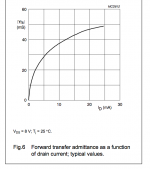Picture this:
100 Years ago: We did live in an analog world; all mechanical apparatuses are analog in and analog out using analog controls.
Current times: We live in an analog/digital world we use AD-converters then process digital and after that we used DA-converters.
10 Years from now (as Apple and Microsoft will tell you): We live in a digital world; the AD- and DA-converters are gone.
20 Years from now (as this NASA-thing picks up): Were back at 100 years ago.
So where are we going from here 🙂
But still: the analog stuff is winning(in the end) and that can not be bad 🙂
Thought transference - without any circuitry/software from Microsoft/Apple!😀
THAT will get those guys who will still be arguing over on the Blowtorch thread really at it!!!😛
THAT will get those guys who will still be arguing over on the Blowtorch thread really at it!!!😛
Thought transference - without any circuitry/software from Microsoft/Apple!😀
THAT will get those guys who will still be arguing over on the Blowtorch thread really at it!!!😛
I knew you were going to say that 🙂
I knew you were going to say that 🙂
😀😀
I know....I could feel you willing me to say that!!😉
...on developing a neurosynaptic core for a scalable neuromorphic architecture capable of emulating spiking neural networksreally cool sentence ! 😀
Remenber the computer in kubrik film 2001 ?
We are getting there.... emulating thought... this is really dangerous... even worst than our efforts handling atomic energy.
Hope these Nasa guys read Asimov
The laws of robotic should always be implemented.
Here is the conceptual schematic of the Transimpedance Simplistic, TS in short.
The input is a high Gm transconductance stage with 160mS. This works on a low noise BJT cascode current source.
I will show you the values of the RIAA later today. With that values gain is around 66dB so there could be a volume control in the RIAA and a sensitive amp could be direct fed without a line stage.
The output buffer is from the Paradise. If we use a plus-minus supply on the buffer it could be DC coupled at the output but i think that is too much trouble for too little gain. I think a good cap at the output is just fine.
Need more imput to be able to fully understand the concept.
Like the low impedance riaa 🙂
What should be the output impedance of amplifying first stage ?
As high as possible. The current sources are ok, i think more then 20MOhm.
The problem is the parallel impedance of the input stage.
For the RIAA the values of the Pardise could be taken. One problem to solve the output impedance is to load the input stage with a single ended Paradise mirror.
The problem is the parallel impedance of the input stage.
For the RIAA the values of the Pardise could be taken. One problem to solve the output impedance is to load the input stage with a single ended Paradise mirror.
.
Remenber the computer in kubrik film 2001 ?
.
every time I see Papa avatar
Oh, I thought the avatar meant toilet seat still occupied and Pap's not coming out just yet, so don't wait up.
(stupid me, what was I thinking)
(stupid me, what was I thinking)
Or One could run a simulation to see... what the output impedance is... bet it's swamped with all kinds of capacitive parasitics.
The CCS could also be made with Depletion mosfets...
I think some research has been made on the BF862 jfet regarding performance and current. I think I remember something about that it in contradiction to the SK170 does not need high(ish) current to sound good..2-3 mA should be sufficient. (pls correct me if I remember wrong)
The CCS could also be made with Depletion mosfets...
I think some research has been made on the BF862 jfet regarding performance and current. I think I remember something about that it in contradiction to the SK170 does not need high(ish) current to sound good..2-3 mA should be sufficient. (pls correct me if I remember wrong)
Yes, it runs on low current well but the original idea was to have as high transconductance in the input as possible. That requires high idle.
It is nearly double then on 3mA ( 25mS visa 40mS ), sure the 2SK170 degenerates more drastic.
